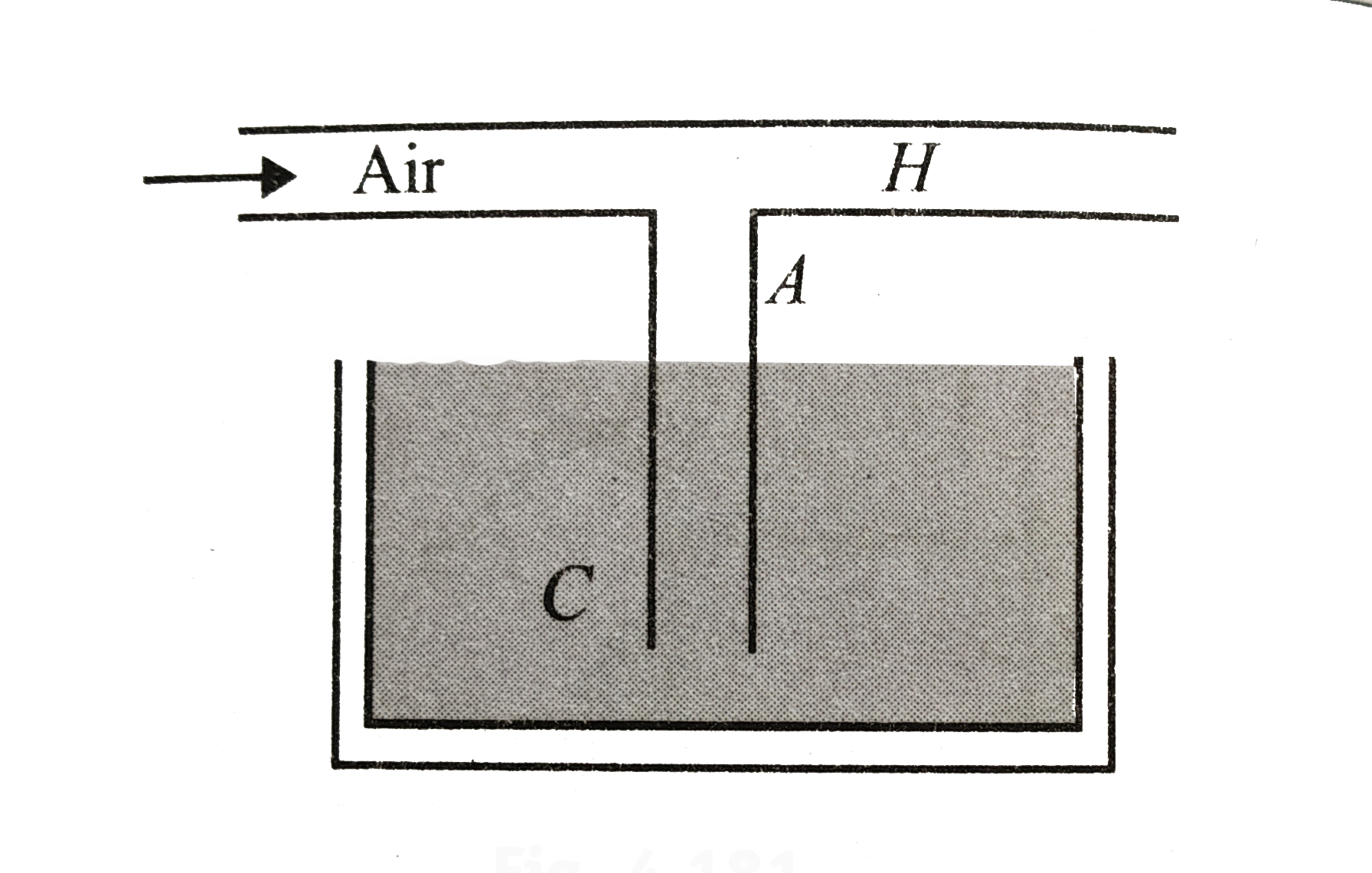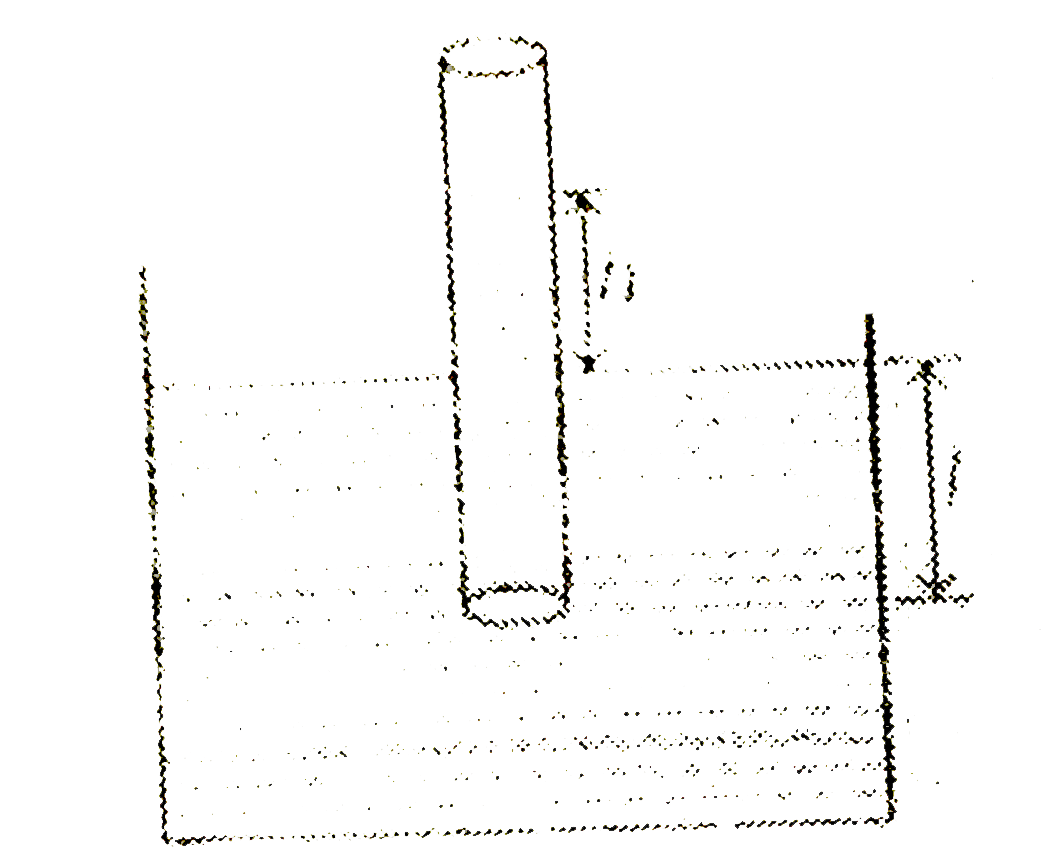When a capillary tube is dipped in a liquid, it rises in the tube to a height h above the outside level . What would happen it the tube is dipped such that its length outside the liquid is less then h? Explain your answer briefly.
To solve the problem, let's break it down step-by-step:
Step 1: Understanding Capillary Action
When a capillary tube is dipped into a liquid, the liquid rises in the tube due to capillary action. This phenomenon occurs because of the adhesive forces between the liquid molecules and the molecules of the tube, as well as the cohesive forces among the liquid molecules themselves.
Step 2: Height of Liquid Rise
The height h to which the liquid rises in the capillary tube is determined by the balance of forces acting on the liquid column, which includes the weight of the liquid and the surface tension acting at the liquid's surface.
Step 3: Insufficient Length of Capillary Tube
If the capillary tube is dipped such that its length outside the liquid is less than h, the liquid will still rise to the top of the tube. However, since the tube is not long enough to accommodate the full height h, the liquid will reach the top of the tube and will not overflow.
Step 4: Adjustment of Meniscus
At the top of the tube, the liquid will adjust its contact angle and the shape of the meniscus. The meniscus is the curve at the surface of the liquid, and it will adapt to the constraints of the tube's length.
Step 5: Conservation of Energy
The liquid will not overflow from the tube because doing so would violate the law of conservation of energy. The energy required to push the liquid out of the tube would exceed the energy available from the capillary action, which is not possible.
Conclusion
In summary, when the capillary tube is not long enough to accommodate the height h, the liquid will rise to the top of the tube, adjust its meniscus shape, and not overflow. This behavior is consistent with the principles of capillary action and conservation of energy.
---
When a capillary tube is dipped into a liquid, the liquid rises in the tube due to capillary action. This phenomenon occurs because of the adhesive forces between the liquid molecules and the molecules of the tube, as well as the cohesive forces among the liquid molecules themselves.
The height h to which the liquid rises in the capillary tube is determined by the balance of forces acting on the liquid column, which includes the weight of the liquid and the surface tension acting at the liquid's surface.
If the capillary tube is dipped such that its length outside the liquid is less than h, the liquid will still rise to the top of the tube. However, since the tube is not long enough to accommodate the full height h, the liquid will reach the top of the tube and will not overflow.
At the top of the tube, the liquid will adjust its contact angle and the shape of the meniscus. The meniscus is the curve at the surface of the liquid, and it will adapt to the constraints of the tube's length.
The liquid will not overflow from the tube because doing so would violate the law of conservation of energy. The energy required to push the liquid out of the tube would exceed the energy available from the capillary action, which is not possible.
In summary, when the capillary tube is not long enough to accommodate the height h, the liquid will rise to the top of the tube, adjust its meniscus shape, and not overflow. This behavior is consistent with the principles of capillary action and conservation of energy.
Topper's Solved these Questions
- BOOK - ICSECHAPTER - PROPERTIES OF MATTEREXERCISE - MODULE 2(SURFACE TENSIONS)SHORT ANWER QUESTIONS23videos
PROPERTIES OF MATTER
- BOOK - ICSECHAPTER - PROPERTIES OF MATTEREXERCISE - MODULE 2(SURFACE TENSIONS)VERY SHORT ANSWER QUESTIONS13videos
PROPERTIES OF MATTER
- BOOK - ICSECHAPTER - PROPERTIES OF MATTEREXERCISE - MODULE 2(SURFACE TENSIONS)SHORT ANSWER QUESTIONS WITH ANSWERS14videos
PROPERTIES OF MATTER
- BOOK - ICSECHAPTER - OSCILLATIONS EXERCISE - SELECTED PROBLEMS (OSCILLATION IN A TUNNEL BORED THROUGH THE EARTH)2videos
OSCILLATIONS
- BOOK - ICSECHAPTER - SAMPLE QUESTION PAPER - 01 EXERCISE - SECTION - D12videos
SAMPLE QUESTION PAPER - 01
Similar Questions
Knowledge Check
- Question 1 - Select One
When a capillary tube is dipped in a liquid, the liquid rises to a height H in the tube. The free liquid surface inside the tube is hemispherical in shape. The tube is now pushed down sothat the height of the tube outside the liquid is less than H. Then the
Aliquid will come out of the tube like in a small fountainBliquid will ooze out of the tube slowlyCfree liquid surface inside the tube is hemisphericalDthe liquid will fill the tube but not come out its upper end. - Question 2 - Select One
When two capillary tubes of different diameters are dipped vertically, the rise of the liquids is
Asame in both the tubesBmore in tube of larger diameterCless in tube of smaller diameterDmore in the tube of smaller diameter
If a capillary tube is dipped and the liquid levels inside and outside the tube are same. Then the angle of contact is
View SolutionIf the capillary tube is dipped in water is of insufficient length (l<h),will water overflow?
View SolutionFigure shows a capillary tube C dipped in a liquid that wets it. The liquid rises to a point A. If we blow air through the horizontal tube H, what will happen to the liquid column in the capillary tube?
 View Solution
View SolutionA capillary tube is dipped in water to a depth and the water rises to a height h(<l) in the capillary tube. The lower end of the tube is closed in water by putting a lower over it. The tube is now taken out and the thumb is removed from the lower end and it kept open. The length of liquid column in the tube will be
 View Solution
View SolutionA liquid rises in a capillary tube when the angle of contact is:
View SolutionWhen a glass capillary tube is dipped at one end in water, water rises in the tube. The gravitational potential energy is thus increased. Is it a violation of conservation of energy?
View Solution

